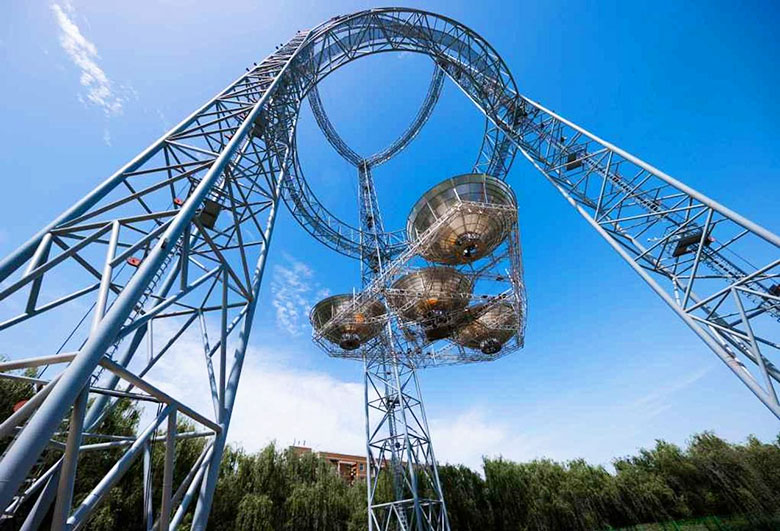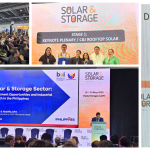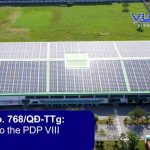
近年来,清洁能源已投入研究并鼓励使用,以减少对化石燃料的依赖、减少环境污染和限制全球变暖。让我们看看这个领域的一些新研究!
储存可再生能源的二氧化碳电池
二氧化碳在高压下液化,并在地球正常大气压下恢复为气态。当从液态变为气态时,二氧化碳会膨胀近 400 倍。在正常条件下,2,5675 升液态 CO2(在 56 atm 压力下)将膨胀至 1,000 升 CO2.
基于这一特点,意大利公司Energy Dome研究了二氧化碳电池的开发,并刚刚在撒丁岛(意大利)推出了首个基于二氧化碳电池技术的储能设施,具有4兆瓦时的存储模型。 Energy Dome 的二氧化碳电池由带有弹性二氧化碳气泡的“巨型”圆顶、液态二氧化碳罐、压缩机系统、热回收系统和电动涡轮机组成。为了给电池充电,人们将使用能量来运行压缩机、液化二氧化碳并在室温下将它们保持在该压力下。在此过程中产生的热量将被捕获并保存在储热系统中。在放电循环中,储存的热量将用于蒸发 CO2。二氧化碳膨胀过程将拉动电动涡轮机收集能量并将其推入电网。 CO2 将返回气泡罩,为下一个循环做好准备.
 能源穹顶的二氧化碳电池模型,用于存储可再生能源(图片:能源穹顶)
能源穹顶的二氧化碳电池模型,用于存储可再生能源(图片:能源穹顶)
据 Energy Dome 称,尽管 CO2 电池的效率仅为 75% 左右,但低廉的存储成本(几年内仅为 50-60 美元/MWh 左右)使得 CO2 电池与锂电池具有竞争力。此外,二氧化碳电池具有非常快的反应速度、更长的储能容量和更少的劣化。 Energy Dome 打算建造一个存储容量为 200 MWh 的全面设施,并在 2023 年底前投入运营.
由 100% 氢气驱动的燃气轮机
在争取到 2050 年实现净零排放的过程中,许多设备制造商 (OEM) 正在研究改进燃气轮机以使用低碳燃料来源。其中,氢气已成为发展重点。一些公司,如通用电气(GE)、三菱电力等已经开始使用结合氢气和天然气的涡轮机。特别是,三菱电力已开发出使用 30% 氢气和 70% 天然气的混合物的燃气轮机,并计划到 2025 年实现 100% 氢气燃气轮机的商业化.
最近,挪威斯塔万格大学的一个专家团队宣布制造出世界上第一台使用 100% 氢气运行的燃气轮机。该研究的重点不仅在于调整氢气燃烧室,还在于调整旧的燃料系统和天然气基础设施。他们正在仔细研究工厂的局限性,并寻找提高产能以产生更多清洁能源的方法。这种类型的项目将提供一种有效的转换解决方案,但是,为了使它们在经济上可行,有必要大幅降低绿色氢的价格并对化石燃料方法征收碳税.
 一个使用氢动力燃气轮机的研究小组(图片:UiS)
一个使用氢动力燃气轮机的研究小组(图片:UiS)
天基太阳能 – SBSP
许多国家对天基太阳能(SBSP)感兴趣——在外层空间收集太阳能并将其分配到地球。在这个解决方案中,太阳反射器将安装在轨道上的卫星上。太阳能将集中在太阳能电池板上,转化为微波或激光,然后射向地球。这些能量将被天线收集并转化为电能。无论天气如何,空间发电站都可以昼夜供电。因此,SBSP 产生的能量可能是地球上太阳能的 40 倍.
长期以来,美国、俄罗斯和中国等大国对 SBSP 很感兴趣,并在该领域进行了许多令人瞩目的实验。中国西安电子科技大学已成功测试了一套宇宙太阳能集热器系统。该塔高 75 米,配备接收天线以及欧米茄集中器系统、光电转换、电力传输和电力管理等附加设备。它是世界上第一个具有完整 SBSP 功能的系统,例如监测太阳、聚焦光、将光转化为电能、以微波的形式传输电能,以及通过单独的天线接收电能.
 西安电子科技大学的宇宙太阳能集热塔于2018年开工。(图片:西安电子科技大学)
西安电子科技大学的宇宙太阳能集热塔于2018年开工。(图片:西安电子科技大学)
中国计划在太空建造第一座太阳能发电厂。按照计划,2028年将一颗卫星发射到太空,在400公里高空测试从太空到地球的无线电力传输技术。太阳能将转化为微波或激光,并指向各种目标,包括地球上的固定位置和移动的卫星。这将是四个阶段中的第一个。首次发射两年后,中国将向距地球 36,000 公里的地球静止轨道发射另一颗功能更强大的卫星。到 2035 年,一座 10 兆瓦的发电厂将投入运营,为许多军事和民用设施供电。到 2050 年,该工厂的产能将增加到 2 吉瓦,而费用将降低到商业可接受的水平.
美国通过将光伏射频天线模块(PRAM)太阳能电池板连接到 X-37B 无人机,成功测试了 2020 年投入太空的太阳能电池板。此外,美国正在考虑一项耗资 1 亿美元的实验,最早在 2025 年为一个偏远的军事前哨提供电力。英国政府与美国一样,正在考虑一项 160 亿英镑的提案,以在 2035 年之前在太空建造一座试点太阳能发电厂。许多欧洲国防承包商将为该项目做出贡献.
如果这些 SBSP 项目成功,它将成为满足全球对清洁能源需求的突破性解决方案,尤其是在阳光不足的地区.
Vu Phong Energy Group




